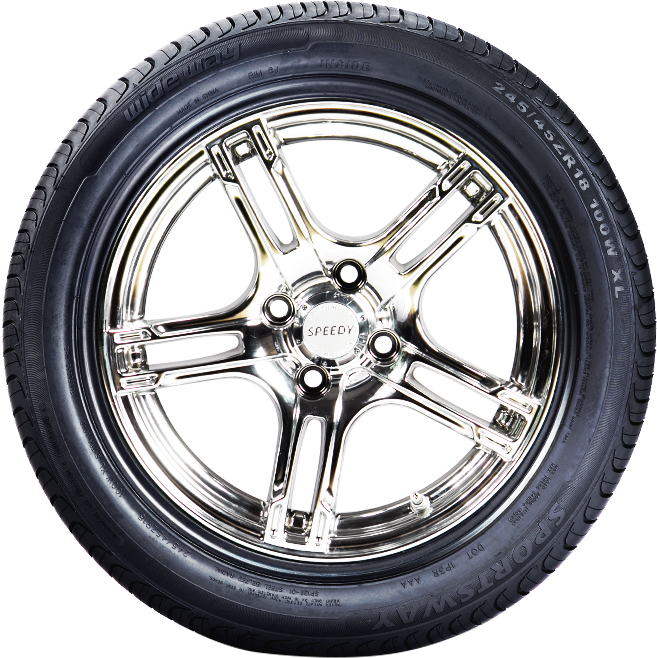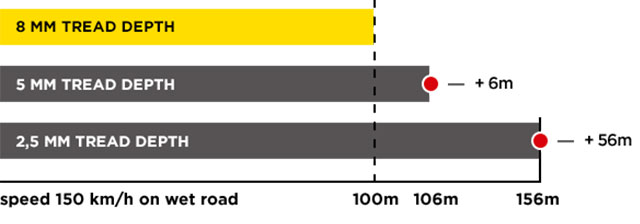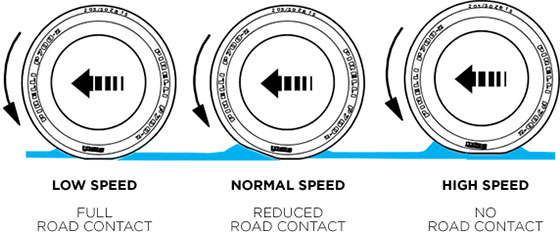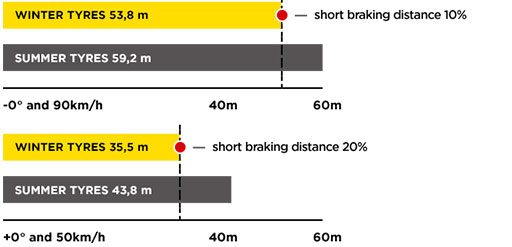一级标题
一级标题
The tire is the ONLY element to make contact between the vehicle and the road. That is why using and maintaining tires correctly, as well as being aware of their characteristics, is fundamental in order to guarantee safety in any situation, to increase your tires’ lifespan and to save money. Always remember to drive safely and respect the environment.
On the tire sidewall there are several different inscriptions. As well as the name of the brand and the range, the size and characteristics of the tire are marked: nominal width, ratio between nominal section height and nominal section width, structure or construction code, rim diameter and load and speed index.

1.245/45ZR18 -- Size 245 -- tire width , 45 -- Aspect Ratio, R--Radial, 15--Rim Diameter
2.Wideway -- Brand Name
3.SAFEWAY -- Pattern Name
4.DOT 1P3R -- DOT Certification No.
5.100 WXL -- Load Index & Speed Rating
6.STEEL BELTED RADIAL TUBELESS -- Radial Construction
7.PLIES:TREAD 2 POLYESTER +2 STEEL +1 NYLON SIDEWALL. 2. POLYESTER -- Structure
8.TREADWEAR 300 TRACTION A TEMPERATURE A -- UTQG
The tire pressure has a strong influence to the safety and economy of a vehicle.
Tire pressure when cold (never try to adjust the pressure while the tire is hot) must therefore be checked regularly (every month), especially before a long trip.
Braking distance is related to the tire pressure. At a driving speed of 100 km/h, the braking distance with correctly inflated tires will be 40 m compared to 42.4 m with deflated tires. Performance is therefore improved by almost 6%, equal to 2.4 m.

Incorrect inflation pressure causes irregular tire wear. Pressure that is too low causes shoulder wear and carries the risk of structurally damaging the tire. Pressure that is too high causes wear to the center of the tire.

Keep your tires at the correct pressure
A tire is made of rubber, steel and fibers. Steel and fibers are structural materials, the rubber has the function of protecting them against environmental influences.
The rubber itself can be damaged by chemicals or other environmental influences.
Sharp objects, strong impacts or other mistreatment can cause visible and invisible structural defects.
Also tire pressure that is too low causes structural defects.
High temperatures and sunlight can destroy the rubber.
Check for visible damage
The tread depth is a substantial safety factor. It has an important influence on the vehicle’s contact with the ground.
While braking, the Antiblock Braking System is controlling the wheel at the slip threshold and water is collected. The tire tread becomes saturated and the braking distance increases drastically.
Braking distance in meters and remaining speed:

Hydroplaning depends on water depth, tread depth and driving speed.In order to measure hydroplaning, a car is driven into a basin with 8 mm water and speeds up. As soon as the motor works harder without speeding up, hydroplaning starts.

Check the tread depth
The correct choice of seasonal change-over is fundamental for safe driving. Summer tires in summer, winter tires in winter. Braking distance, traction and stability all strongly depend on the adequate rubber compound.
Winter tires not only ensure grip on snow, they perform better than summer tires whenever the temperature drops below 7°C.Wideway recommends fitting winter tires to ensure mobility on every surface and in all cold weather conditions.

From +7°C and under, summer tires have longer braking distances, and drastically less grip on snow.

Conditions change under +7°C